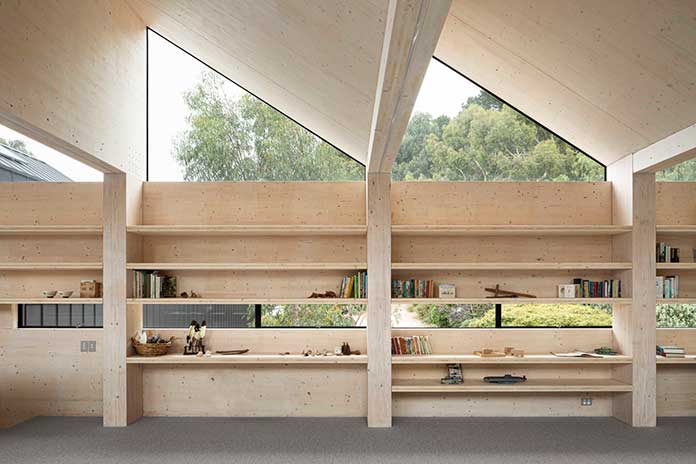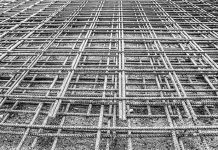Cross-laminated timber (CLT) is a durable, versatile, sustainable and cost-effective building material that has been gaining popularity in recent years. It is obtained by layering pieces of wood at 90-degree angles and bonding them together with environmentally-friendly glues. The resulting product is an incredibly strong and durable building material.
The development of CLT is a revolution in the construction industry. It provides quicker and more efficient building processes while reducing construction’s environmental impact.
Made by cross-layering smaller pieces of lumber, CLT has many applications, from residential and commercial buildings to institutional and public buildings.
This innovative material can be used in a variety of building elements, including walls, floors, and roofs. Additionally, CLT fits virtually any building shape, allowing architects for unique and innovative designs.
Cross-laminated timber represents a thrilling and sustainable future for the construction industry. It is an alternative to traditional building materials like concrete and steel.
In this article, we will take a glance at a detailed introduction of CLT, its benefits and disadvantages, special CLT buildings and its sustainability. We’ll also talk about the future of CLT technology.
Let’s start with an in-depth understanding of what CLT actually is.
What is CLT?
CLT is a very simple and innovative building material made by layering wood pieces and then bonding them with the help of glue. CLT panels, which must consist of at least 3 layers for the system to be strong, are prefabricated solid wood panels.
The number of layers must be at least 3 and it should consist of odd numbers. Which means it can be 3, 5, 7, etc. If the number of these layers is even, it will break the spell of CLT.

The layers should be glued in a way that the fibers of each wood are overlapped perpendicularly. In this way, the outcome material becomes resistant to both pressure and tensile force like reinforced concrete.
While CLT panels can be used as carrier elements, they are also used for cladding facades and interior furniture. Moreover, wood has a place in the high-rise construction field thanks to the innovative technology of CLT.
Advantages of Cross-Laminated Timber in Architecture
CLT features a great number of advantages over traditional building materials, including its strength and durability, sustainability, design flexibility, cost-effectiveness, and speed of construction.
Cross-laminated timber panels can be produced in a desired size suitable to the area of usage. One of the biggest advantages of CLT is that the number of layers and the type of wood material can be changed according to the required static values.

Since this material has low weight, CLT buildings are so lightweight than steel and concrete. Structures should reduce the damaging effects of earthquakes, especially in high-rise buildings. Therefore, cross-laminated timber panels are among the optimal building materials, as giving less harm during earthquakes.
The workmanship on CLT structures is simple. Because cross-laminated timber construction elements are prefabricated and ready for use. CLT panels’ assembly is so easy, too.
Additionally, the production of CLT panels is highly compatible with prefabrication, making the duration of the construction significantly short. For example, simple CLT houses can be built in 2-3 weeks.

This building material is also economical. The features, such as simple use of panels, prefabrication, less effort to build and fast construction, make it a so budget-friendly building material.
It has a wide range of applications from small-scale items like furniture to structural components such as walls, roofs, columns and beams.
Moreover, it is a sustainable and environmentally friendly material, with lower carbon emissions than traditional building materials such as reinforced concrete and steel.
Summary of CLT building material features:
- Durable
- Sustainable
- Prefabricated
- Flexible sizes
- Lightweight
- Fast construction
- Easy workmanship
- Economical
- Cheap
- Wide application areas
Examples of CLT Buildings
As we mentioned above, CLT panels are suitable for every building type, including commercial, residential, institutional and public buildings. While we mostly come across cross-laminated timber in houses and apartments, it continues to gain more popularity in different building types like museums, hospitals, schools, religious structures, offices and public buildings.
The Mjos Tower

The Mjos Tower, built at an altitude of 84 meters in 2018, is located in Norway. In the construction of this structure, which has a mixed-use, nearly 12 thousand trees were used.
Brock Commons
Our next example is Brock Commons from Vancouver, USA. The 18-story student dormitory building with cross-laminated timber is not entirely made of wood. There are reinforced concrete carriers and walls in elevator blocks and on the ground floor.
How CLT panels are produced?
As you know CLT is an engineered building material that is produced in factories. The production process of cross-laminated timber (CLT) involves some steps to create a strong and durable building material.
Here’s how cross-laminated timber is produced step-by-step:
- Log selection and preparation
Firstly, logs should be selected depending on their sizes, qualities and moisture levels. After that, they are debarked and cut into smaller pieces.
- Drying
In order to make the final product stable and strong, logs should be dried. This will ensure the excess moisture is reduced.
- Sorting and grading
In the third step, these wood pieces are sorted and graded based on their quality and strength.
- Gluing and pressing
Wood plates are then glued together at 90-degree angles to create a large cross-laminated timber panel. The panel is then pressed to remove excess moisture and ensure a strong bond between the layers.
- Trimming and finishing
The panel is then trimmed to the desired size and shape, and any imperfections are removed. The surface of the panel is also sanded to create a smooth and even surface.
- Coating and finishing
In the last step, the panels can optionally be coated with protective finishes to enhance their durability and resistance to moisture and insects.
Consequently, CLT obtained from natural resources is produced appropriately by going through some controlled steps in the factory environment. The resulting product is eco-friendly, sustainable, durable, strong and flexible.
Next, we’ll continue with the sustainability of the cross-laminated timber building material.
Sustainability
Cross-laminated timber is a sustainable building material that offers a wide range of environmental benefits. Below, there are some key environmental benefits of CLT.
The raw material or source of CLT is wood, which is a renewable natural source. This ensures an unlimited source as long as we plant trees.
It has a lower carbon footprint than traditional building materials like reinforced concrete and steel as it needs lower energy in the production phase and produces fewer greenhouse gas emissions.
CLT improves the energy efficiency of a building. Because it is naturally an insulated material thanks to wood layers and glues. This can help to reduce energy requirements to heat and cool buildings.
It’s a recyclable material. It is possible to reuse the CLT building material at the end of its life cycle. This contributes to the circular economy.
Here’s the summary of CLT’S sustainable features:
- Renewable natural source
- Low carbon footprint and gas emissions
- Energy efficiency
- Recyclable material
- Economical
Overall, the environmental aspect of CLT makes the product the right choice for builders and architects who want to reduce the environmental harm of buildings. This ensures that cross-laminated timber structure material will play a significant role in the future of the construction industry.
Conclusion
In conclusion, cross-laminated timber (CLT) is a highly promising material for the construction industry, with many advantages over traditional building materials. It has a renewable raw resource that reduces carbon footprint, as well as improves energy efficiency and recyclability.
Besides its environmentally-friendly features, it offers some additional advantages compared to traditional building materials like reinforced concrete and steel. Durability, sustainability, flexibility, lightweight, wide application area, easy workmanship and easy production are among these advantages of CLT.
In the future, we can expect to see increased adoption of CLT. As the construction industry continues to prioritize sustainability and innovation, CLT will keep enhancing its place in the future of the industry.
Thanks for reading this article about the cross-laminated timber building material. Don’t forget to share your opinions on this innovative wooden technology with us.
Read Also: CLT House Compilation: Sustainable | Beauty | Durable
FAQ
A: Cross-laminated timber (CLT) is an innovative building material made of wood layers glued together.
A: CLT offers numerous advantages, such as simple application, prefabricated production, sustainability, low carbon footprint, economical, durability, strength and lightweight.
A: Yes, cross-laminated timber (CLT) is a sustainable building material. Because its raw material is natural wood.
A: It is used as the main material for structural systems, walls, floor decks, roofs, cladding and furniture.
A: Even though it is made from wood, CLT has incredible strength against loads, earthquakes and fire resistance, the U.S. Department of Agriculture says.
A: CLT is produced by gluing together layers of wood in perpendicular directions.
A: CLT has several advantages over traditional building materials such as concrete and steel. It is lightweight, more flexible and easy to transport. It can also help reduce the carbon footprint of buildings.
A: Yes, CLT is safe to use in construction when manufactured and installed properly. It has been extensively tested for strength, durability, and fire resistance.
A: Yes, CLT can be used for tall buildings. It has been already used for buildings up to 18 stories tall and is currently being tested for even taller structures. However, additional research and testing may be needed to ensure the safety and performance of CLT in very tall buildings.

















